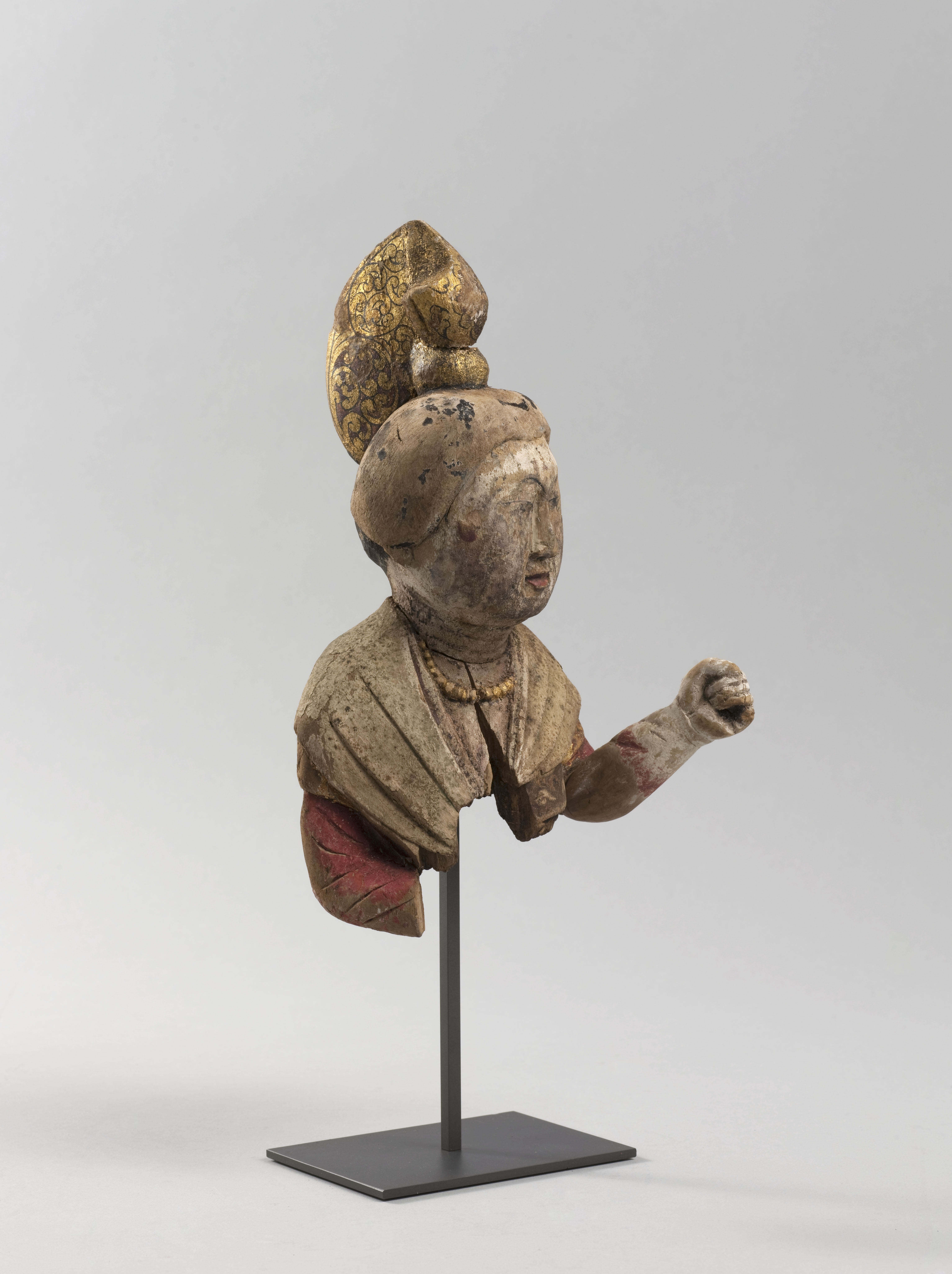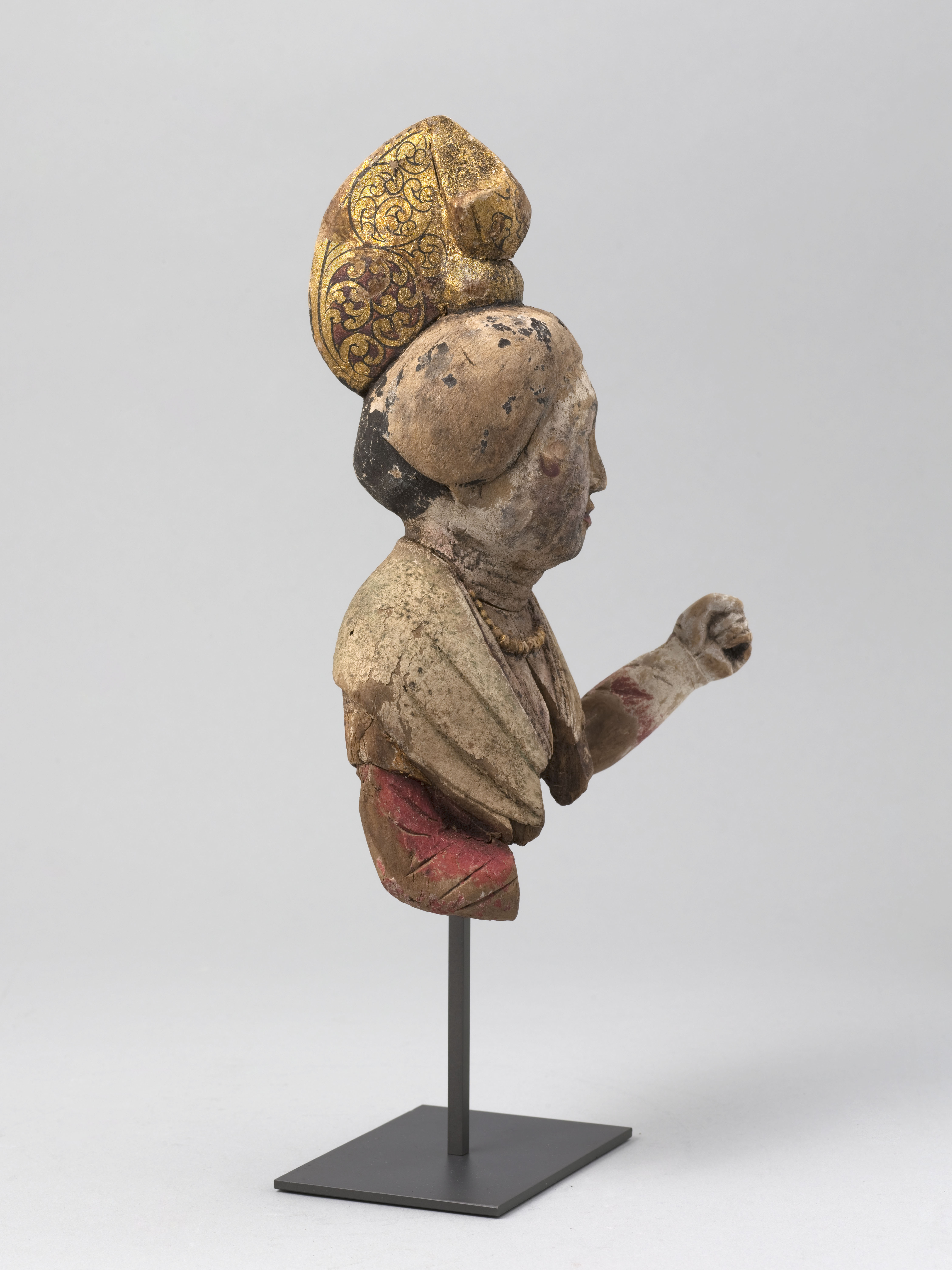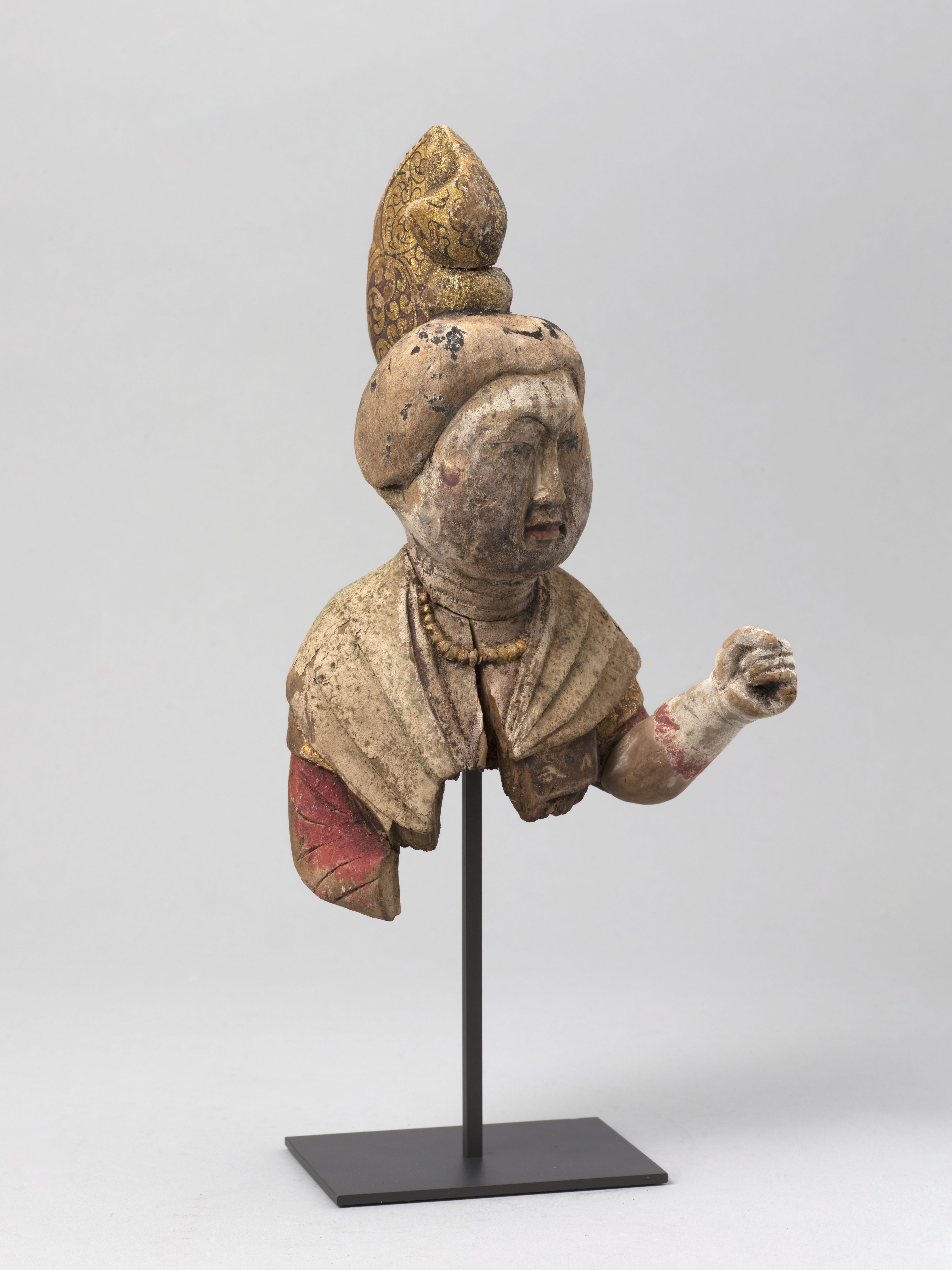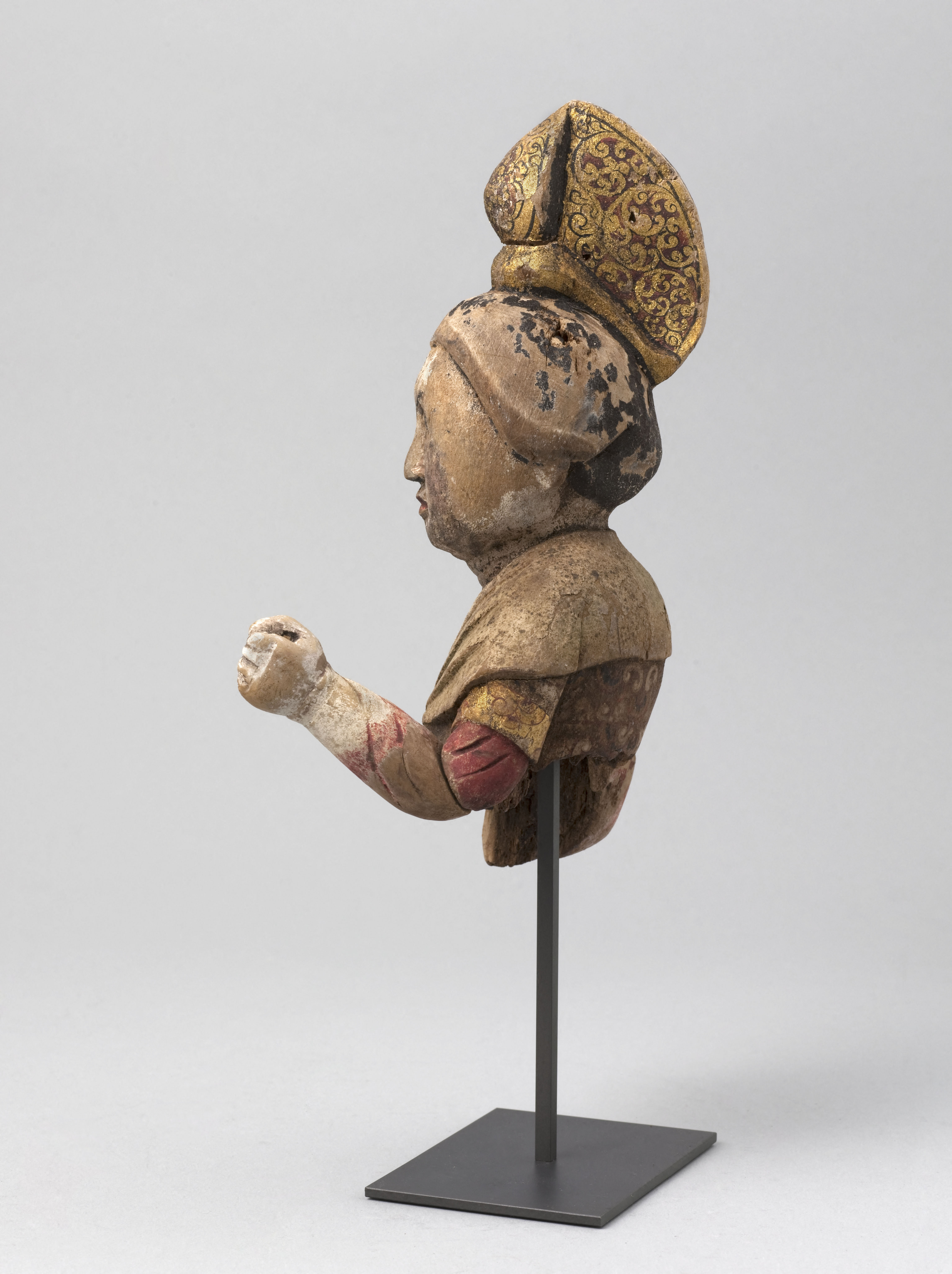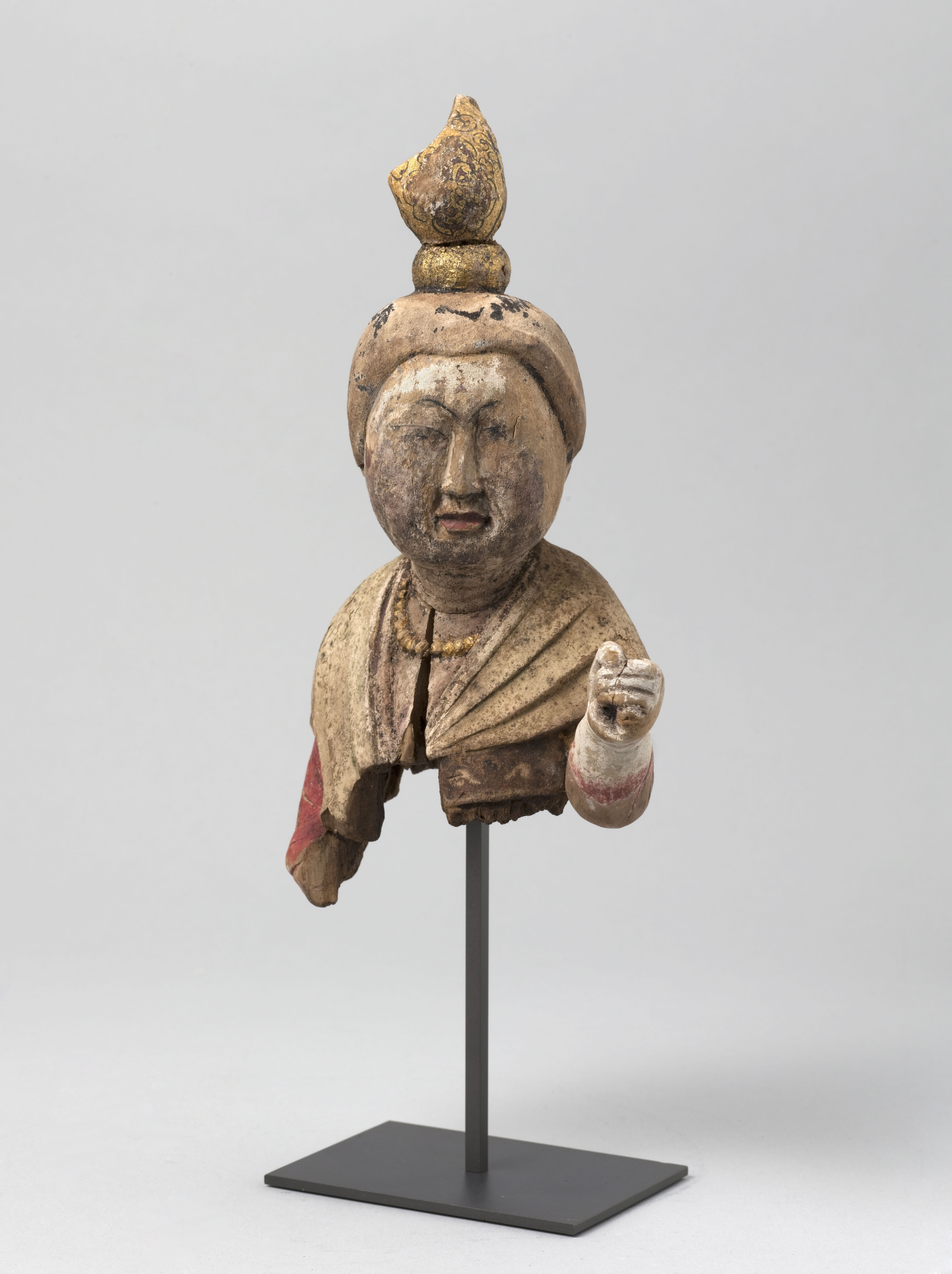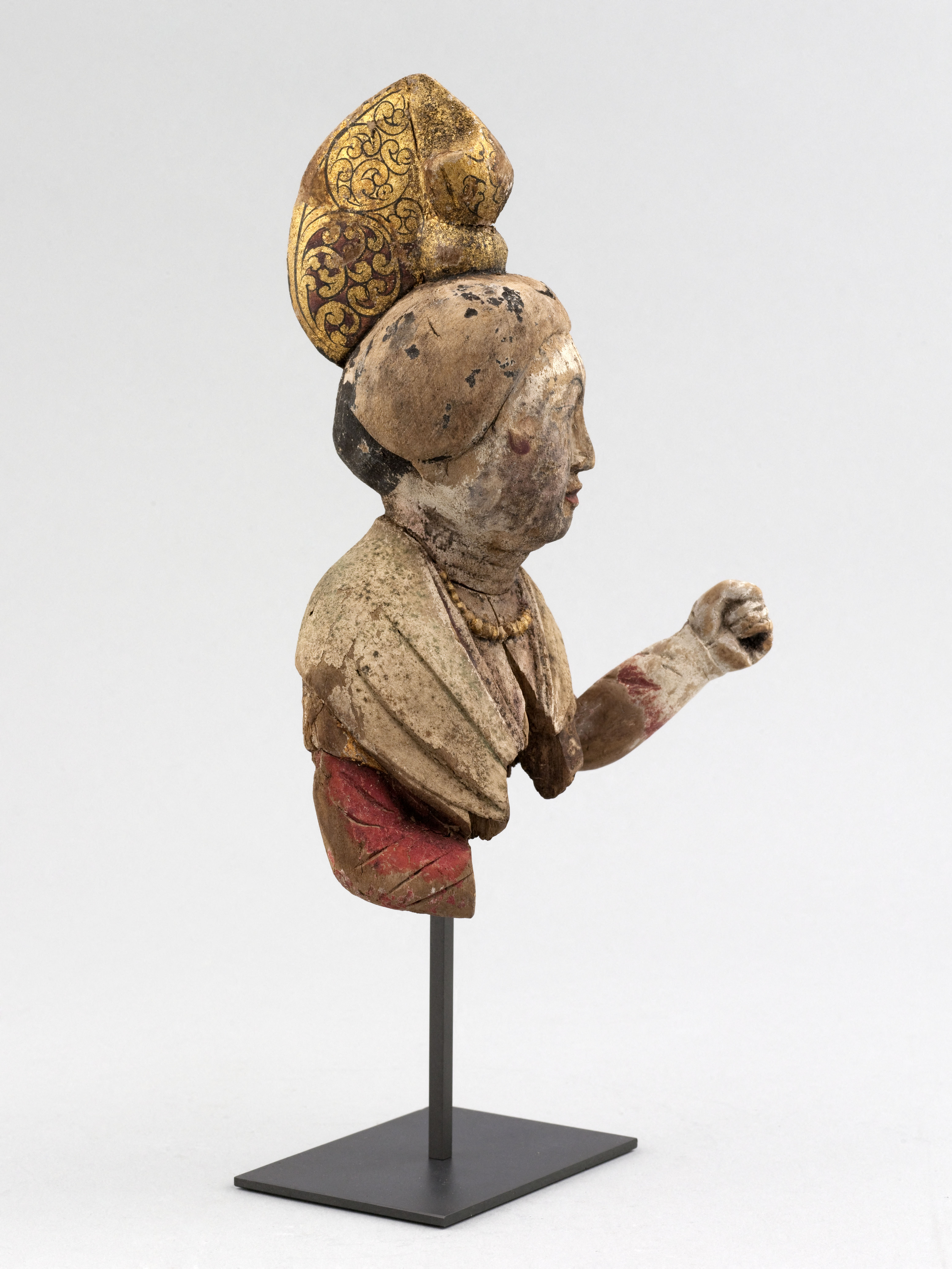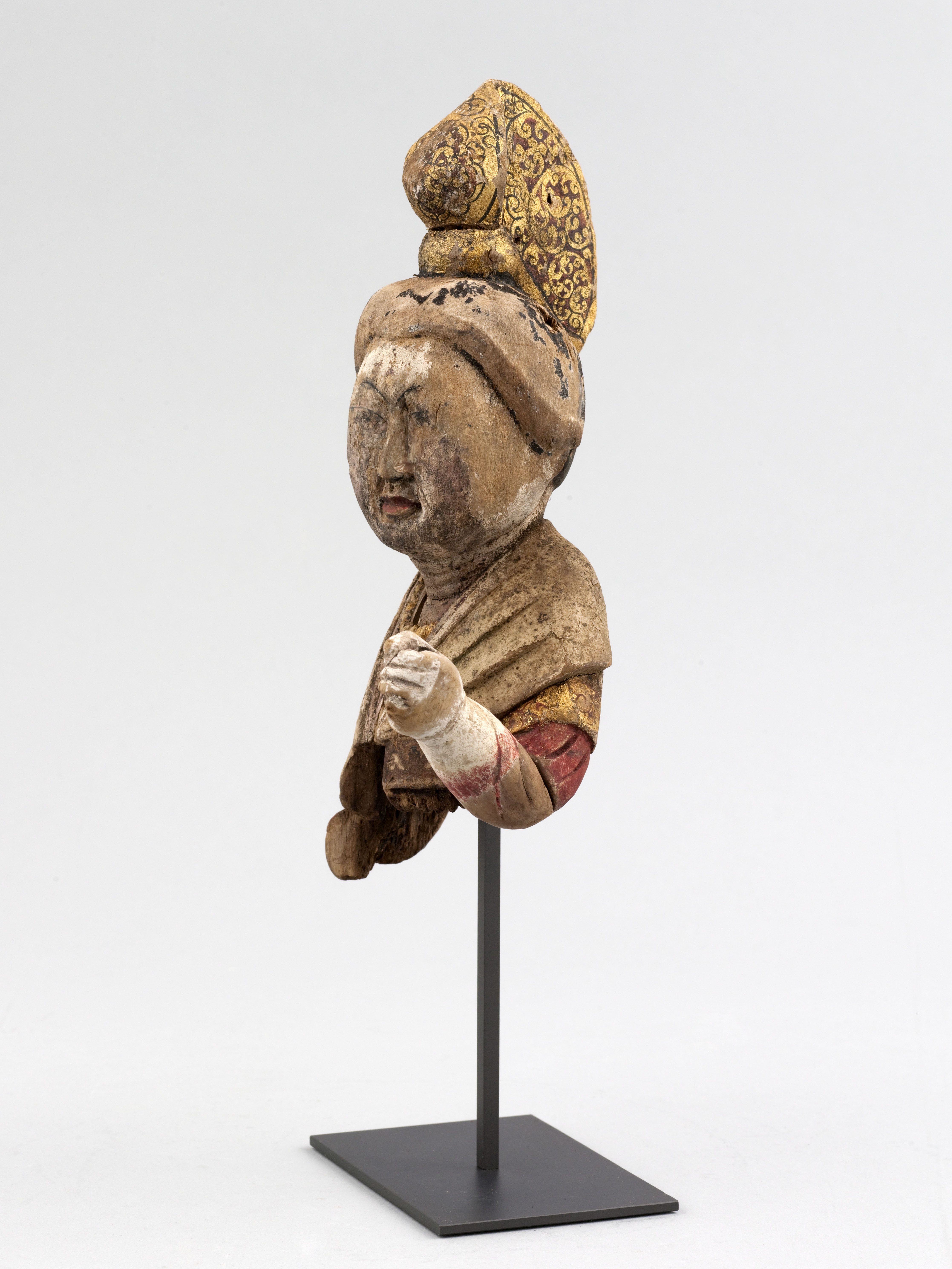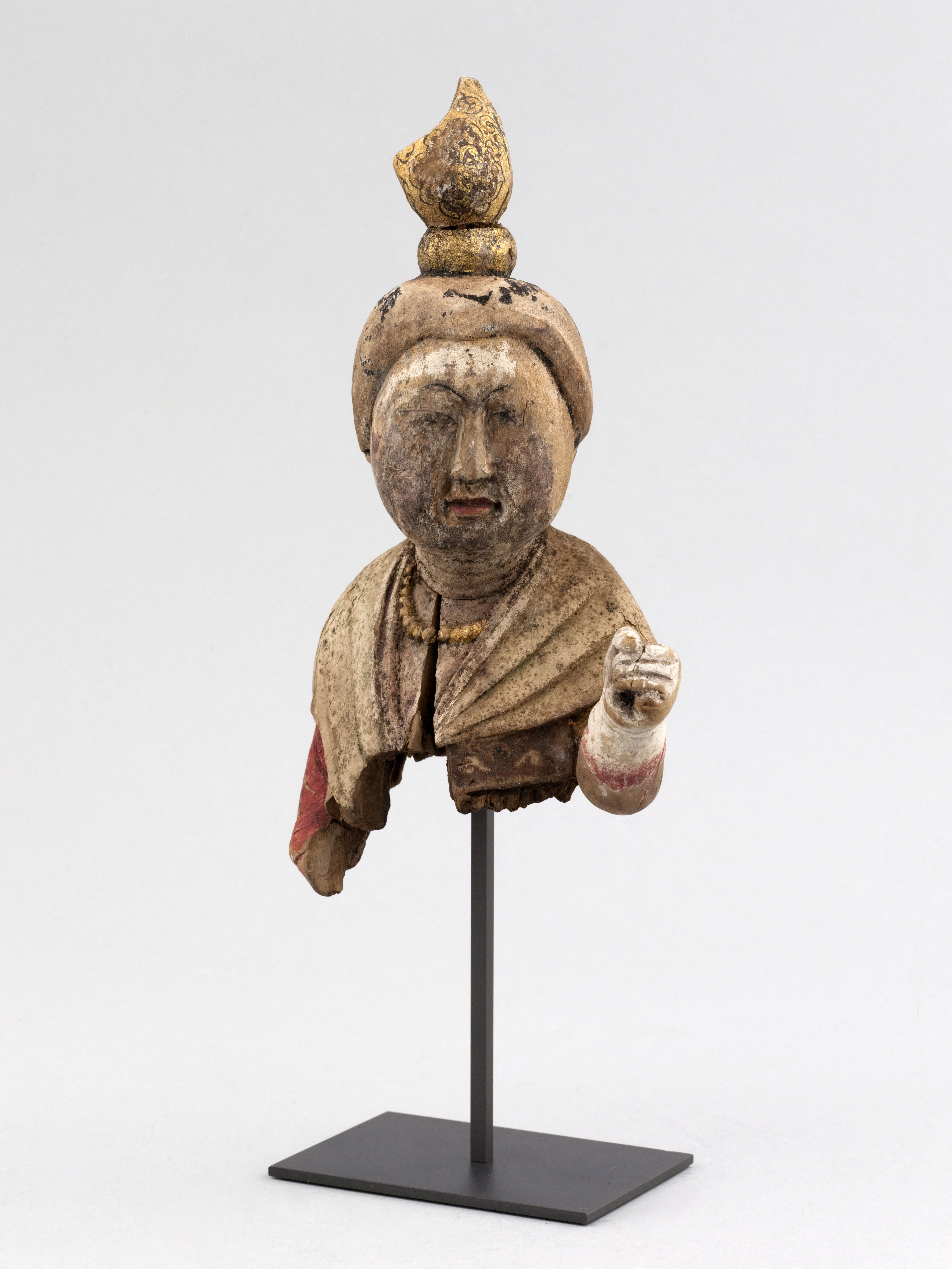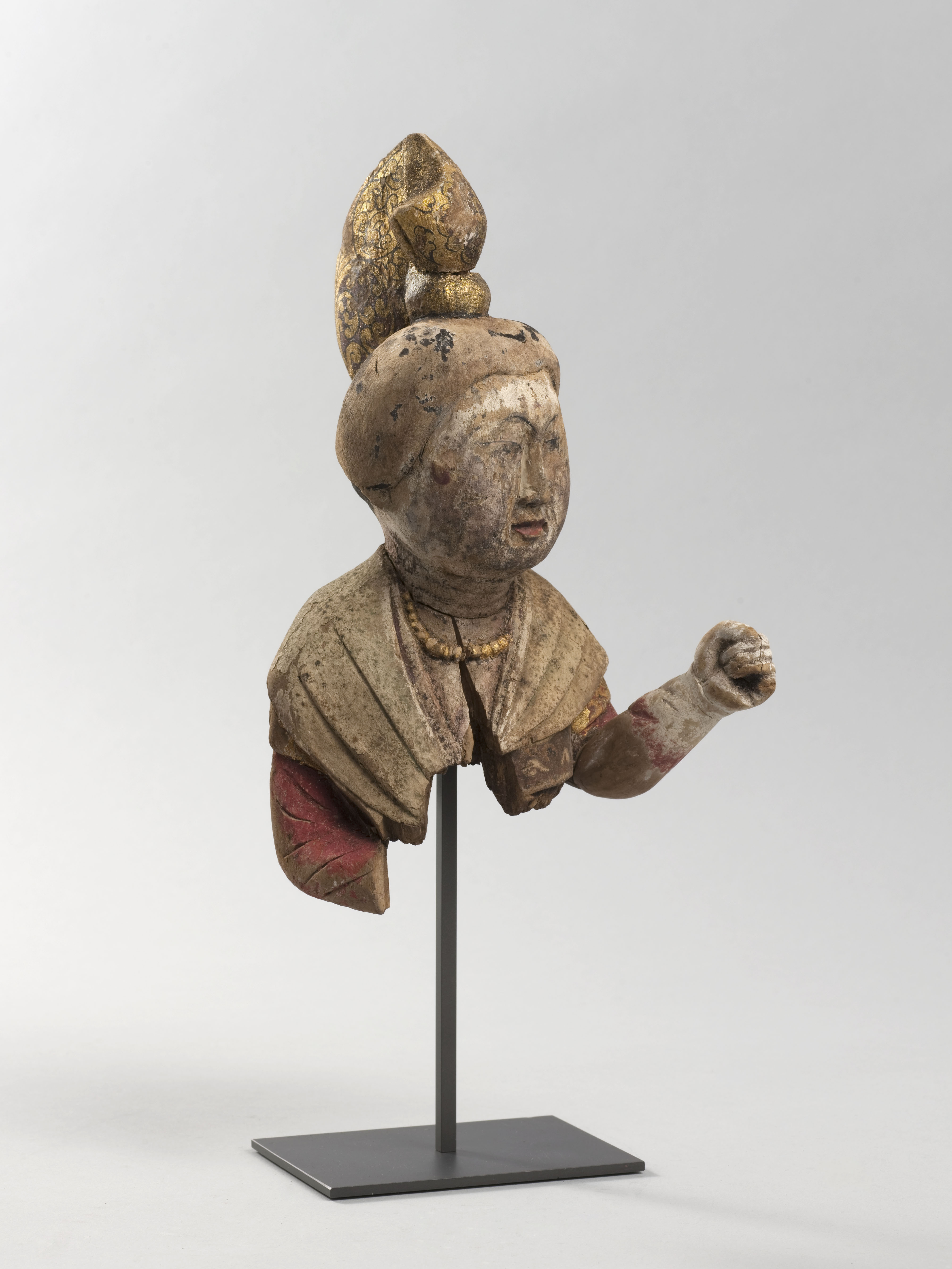
Buste de femme
Bois (matériau), Dorure, Polychromie
Statuette, Mingqi
Achat
M.C. 2010-8
This bust of a young woman, the upper part of which is all that has survived, provides an example of court fashions during the Tang dynasty. Her hair is drawn back in a high bun on the top of her head. A stole over her shoulders covers the opening of her dress, worn with a pearl necklace. Her round face and “butterfly”-shaped eyebrows is turned elegantly to her left hand, which probably originally held an object. The style of dress and hairstyle echoes that in paintings of courtiers found in the tomb of the prince Li Xian (Shaanxi), dating from 684, and in the tomb of Li Zhongrun, dating from 701.
Besides its aesthetic qualities, this work is notable in having belonged to Paul Pelliot (1878-1945), a teacher at the Ecole Française d’Extrême-Orient and head of the archaeological campaign in Serindia (the western Chinese provinces of Xinjiang and northern Gansu) in 1906, during which he discovered a grotto in Dunhuang containing thousands of ancient manuscripts. In its execution and the materials used, this piece is comparable to wooden objects found in tombs in central Asia. It would appear to have been brought back from Gansu province.
